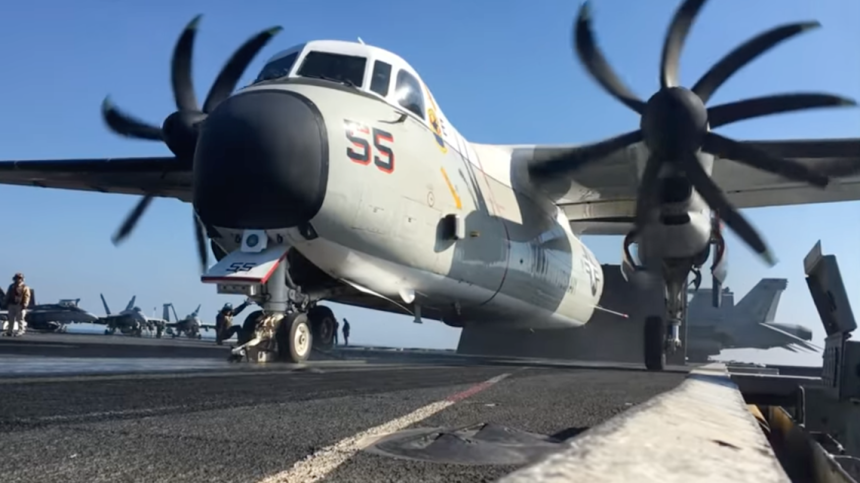The footage explains what the pilots and handlers are looking for during a real catapult launch.
The Grumman C-2A Greyhound is a twin-engine, high-wing cargo aircraft, designed to perform the COD (Carrier Onboard Delivery) mission for the U.S. Navy aircraft carriers.
The aircraft, that has carried out the mission for more than 55 years, regularly transporting equipment, passengers (including occasional distinguished visitors) supplies and mail to and from U.S. flattops, will soon be retired: the type is being replaced by 58 CMV-22 Osprey tilt-rotor aircraft included in a 4.2B USD contract signed by the Pentagon in 2018 to fully replace the C-2 fleet. The last squadron is expected to phase out the Greyhound in 2024.
Our friend Rob Roy is a former Naval Aviator who flew the C-2A Greyhound with the “Rawhides” of VRC-40. His cool videos filmed during his career flying the type provide an unprecedented look at the C-2’s blue water operations inside and outside the cockpit (check these ones we have already commented, showing Rob not even blinking on approach to the carrier or performing a bolter and a waveoff).
The following one is, once again pretty cool, as it shows a catapult shot off ‘Cat 4’ (catapult #4) on the USS Harry S. Truman.
“Another Naval Aviator, who is also a good friend of mine, filmed the video and was able to capture the raw power of what aircraft carriers are callable of, but also just how deadly military aircraft, propeller planes in particular, can be,” he told us.
“There was nothing out of the ordinary with this particular launch, other than we were at the ‘end of the launch cycle’ and we were the last to get catapulted off. This is also why you see the F/A-18 Super Hornet coming in overhead for the carrier break. In Naval Aviation, unless there are student pilots flying to the carrier for the first time or if it’s bad weather (Case II or Case III) we operate under something called ‘zip lip.’ This means that no one is talking to anyone, unless a safety of flight issue arises.”
“This is usually the case on a clear VFR day (Case I). So that Hornet was coming in for the overhead break, then broke, and timed his ‘approach turn’ and subsequent final approach (flying the ball) immediately following my launch. It’s quite a sight to see really, but if he’s too early, then he has to wave off and try again.”
“Naval Aviation is really about being the best you can be, while being safe and always trying to anticipate what the other aircraft are going to do. On deployment (which is when this video was from) we are all very in sync with how we are supposed to operate and it’s one of the many reasons why the carrier strike group is such an effective fighting unit when it’s game time.”
“Also you can see in the video, that immediately after I take off I make a hard bank to the left. This is to get away from the carrier as soon as possible, in case we have an engine failure on takeoff. This way, it minimizes our chances of getting run over (literally) by the ship, if we have to ditch in the water.”
Along with the unique POV the clip also provides explanation for most of the things that happen in the C-2 aircraft and around it before the cat shot.









